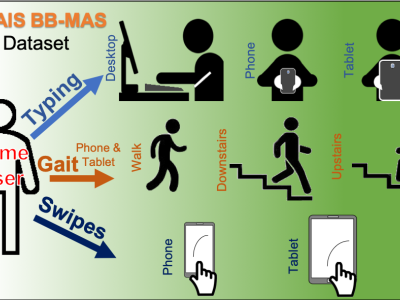Single cells of Neurospora crassa show circadian oscillations, light entrainment, temperature compensation, and phase synchronization

- Citation Author(s):
-
Zhaojie DengJia Hwei-CheongCristian CaranicaLingyun WuMichael JudgeBrooke HullCarmen RodriguezJames GriffithAhmad Al-OmariSam ArsenaultHeinz-Bernd SchuttlerLeidong MaoJonathan Arnold
- Submitted by:
- Jonathan Arnold
- Last updated:
- DOI:
- 10.21227/s9mj-vd81
- Data Format:
 309 views
309 views
- Categories:
- Keywords:
-
Abstract
Using a microfluidics device, fluorescence of a recorder (mCherry or mVenus) gene driven by a clock-controlled gene-2 promoter (ccg-2p) was measured simultaneously on over 1,000 single cells of Neurospora crassa every half hour for 10 days under each of varied light and temperature conditions. Single cells were able to entrain to light over a wide range of day lengths including 6 hour (h), 12 h, or 36 h days. In addition, the period of oscillations in fluorescence remained remarkably stable over a physiological range of temperatures from 20 oC to 30 oC (Q10 = 1.00-1.07). These results provide evidence of an autonomous clock in most single cells of N. crassa. While most cells had clocks, there was substantial variation between clocks as measured by their phase, raising the question of how such cellular clocks in single cells phase-synchronize to achieve circadian behavior in eukaryotic systems at the macroscopic level of 107 cells, where most measurements on the clock are performed. Single cells were placed out of phase by allowing one population to receive 6 or 12 hours more light before lights out (D/D). The average phase difference was reduced in the mixed population relative to two unmixed control populations.
Normal 0 false false false EN-US X-NONE X-NONE /* Style Definitions */ table.MsoNormalTable {mso-style-name:"Table Normal"; mso-tstyle-rowband-size:0; mso-tstyle-colband-size:0; mso-style-noshow:yes; mso-style-priority:99; mso-style-parent:""; mso-padding-alt:0in 5.4pt 0in 5.4pt; mso-para-margin:0in; mso-para-margin-bottom:.0001pt; mso-pagination:widow-orphan; font-size:12.0pt; font-family:"Calibri",sans-serif; mso-ascii-font-family:Calibri; mso-ascii-theme-font:minor-latin; mso-hansi-font-family:Calibri; mso-hansi-theme-font:minor-latin; mso-bidi-font-family:"Times New Roman"; mso-bidi-theme-font:minor-bidi;}
Instructions:
Normal 0 false false false EN-US X-NONE X-NONE /* Style Definitions */ table.MsoNormalTable {mso-style-name:"Table Normal"; mso-tstyle-rowband-size:0; mso-tstyle-colband-size:0; mso-style-noshow:yes; mso-style-priority:99; mso-style-parent:""; mso-padding-alt:0in 5.4pt 0in 5.4pt; mso-para-margin:0in; mso-para-margin-bottom:.0001pt; mso-pagination:widow-orphan; font-size:12.0pt; font-family:"Calibri",sans-serif; mso-ascii-font-family:Calibri; mso-ascii-theme-font:minor-latin; mso-hansi-font-family:Calibri; mso-hansi-theme-font:minor-latin; mso-bidi-font-family:"Times New Roman"; mso-bidi-theme-font:minor-bidi;}
The data sets generated during the current study are available from the corresponding authors on reasonable request and are also available as supplementary material in excel files for the light entrainment and temperature compensation experiments. In each excel file on living cells rows are time points; columns are cells. With each experiment there are two files, one with fluorescent measurements every half hour on more than a 1,000 cells and another with fluorescent measurements every half hour on Rhodamine B as a control on uncontrolled periodic and aperiodic factors. The Rhodamine B files simply list the Rhodamine B intensities every half hour in one long row of the excel file starting at time 0. There is one zip file with the light entrainment data sets and one zip file with temperature compensation data sets. There is also this readme file. You will need to unzip the data files to see the excel spread sheets with the data.





